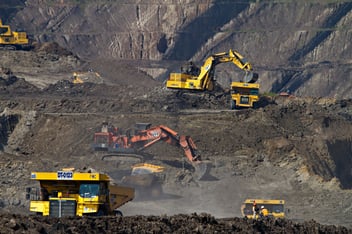1. The Signal Behind the Headline
When JPMorgan Chase lured Dr Sarah Kapnick away from NOAA to become its Global Head of Climate Advisory, it did more than add another sustainability title to a Fortune-100 org-chart. It announced—loudly—that climate science is now board-level, deal-shaping intelligence. In 2025, the world’s largest bank isn’t just offsetting footprints; it’s embedding physics-based weather data into capital allocation, underwriting, and M&A models.
2. Why Should You Care?
-
Top-tier climate talent is scarce and expensive.
If Wall Street is raiding federal agencies, most companies will never outbid the banks. Automated, AI-driven climate tools suddenly look like the only scalable alternative. -
Risk perception is being repriced overnight.
From bid bonds to revolving credit, lenders and insurers are loading climate riders into every term sheet. Businesses that can quantify and mitigate physical-risk exposure will pay less for capital. -
“Invest or divest” isn’t just for equities.
In construction, that translates to go/no-go on bids, acceleration triggers, or wholesale changes in methodology. Projects without a weather-adjusted critical path now carry a built-in credibility discount.
3. Lessons for Construction & Infrastructure
- Bid Filters 2.0
Run probabilistic weather-delay curves before spending estimating hours. Walking away from a climate-exposed tender is often the most profitable move you’ll make all year. -
Dynamic Methodology
Automated thresholds convert live weather data into immediate go/no-go calls—removing guesswork and letting data, not gut-feel, dictate shifts in crews, plant, or sequencing. -
Capital Advantage
If lenders and insurers are hiring climate experts, you know the issue sits in their pricing models. Arrive with a quantified mitigation plan and an AI-driven exposure dashboard and you negotiate from a position of strength—equipped to secure better rates and broader coverage.

4. Stopgap or Strategy?
Hiring a single scientist—no matter how brilliant—doesn’t scale across hundreds of projects or thousands of supply-chain nodes. That’s where AI-powered platforms step in, turning NOAA-grade science into always-on decision support for planners, schedulers, and risk managers. It’s cheaper than poaching a PhD … and it never takes a holiday.
5. Action Checklist
|
Timeframe |
Priority Action |
|---|---|
|
Next 30 Days |
Try the latest EHAB WeatherWise platform. Get hands-on with automated climate intelligence and benchmark its outputs against your current “add-10 %” rules of thumb. |
|
Next 90 Days |
Embed a standard weather-climate checkpoint in every tender. Ensure today’s bids won’t boomerang three years from now by stress-testing schedules and margins under probabilistic climate scenarios. |
|
Next 12 Months |
Make climate and weather readiness business-as-usual. Institutionalize automated monitoring, board-level KPIs, and cross-functional “Climate Ops” rituals so data-driven resilience becomes routine—not reactive. |
6. Bottom Line
If JPMorgan thinks climate science belongs in the C-suite, the rest of us can’t treat it as a footnote. You don’t need Wall-Street payroll to keep up—but you do need Wall-Street rigor. Automated climate intelligence turns a looming liability into a competitive edge. Those who ignore it will pay for it—one weather delay, lost bid, or insurance premium at a time.



